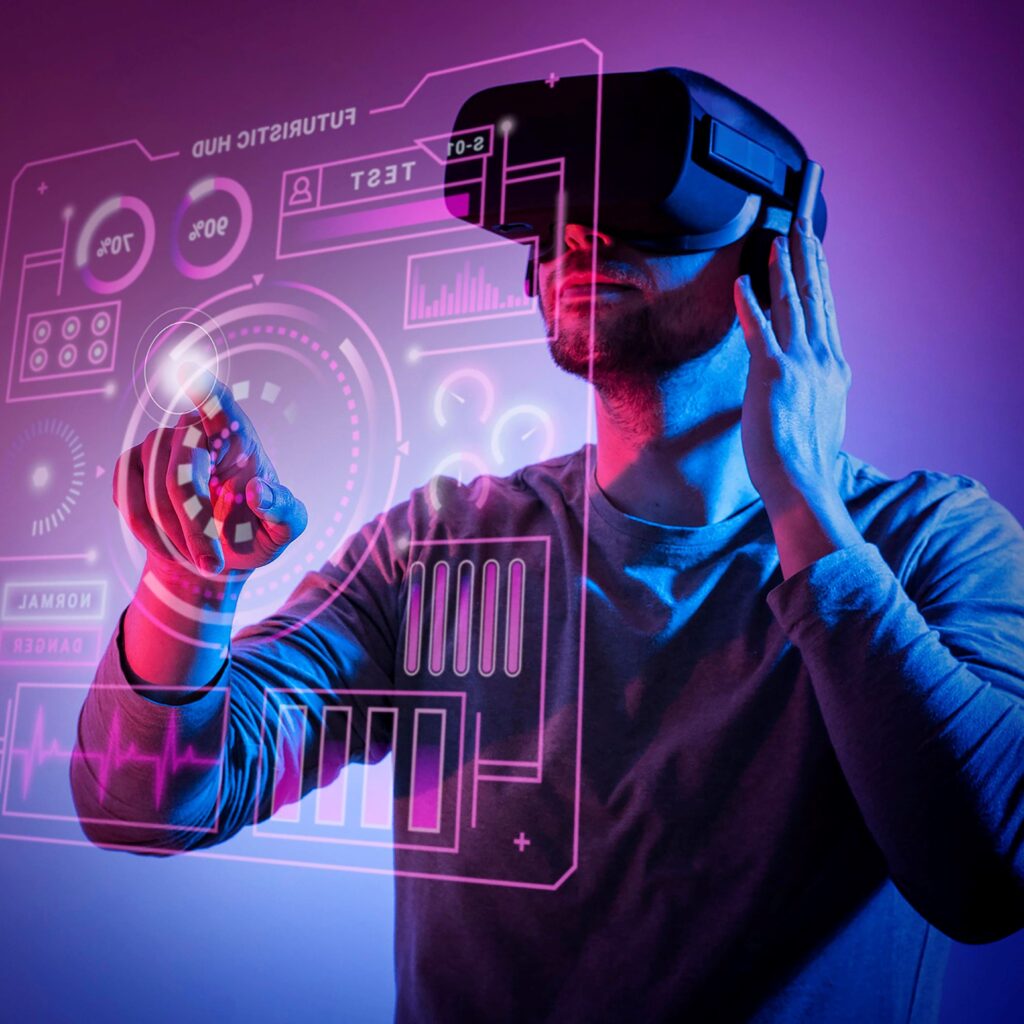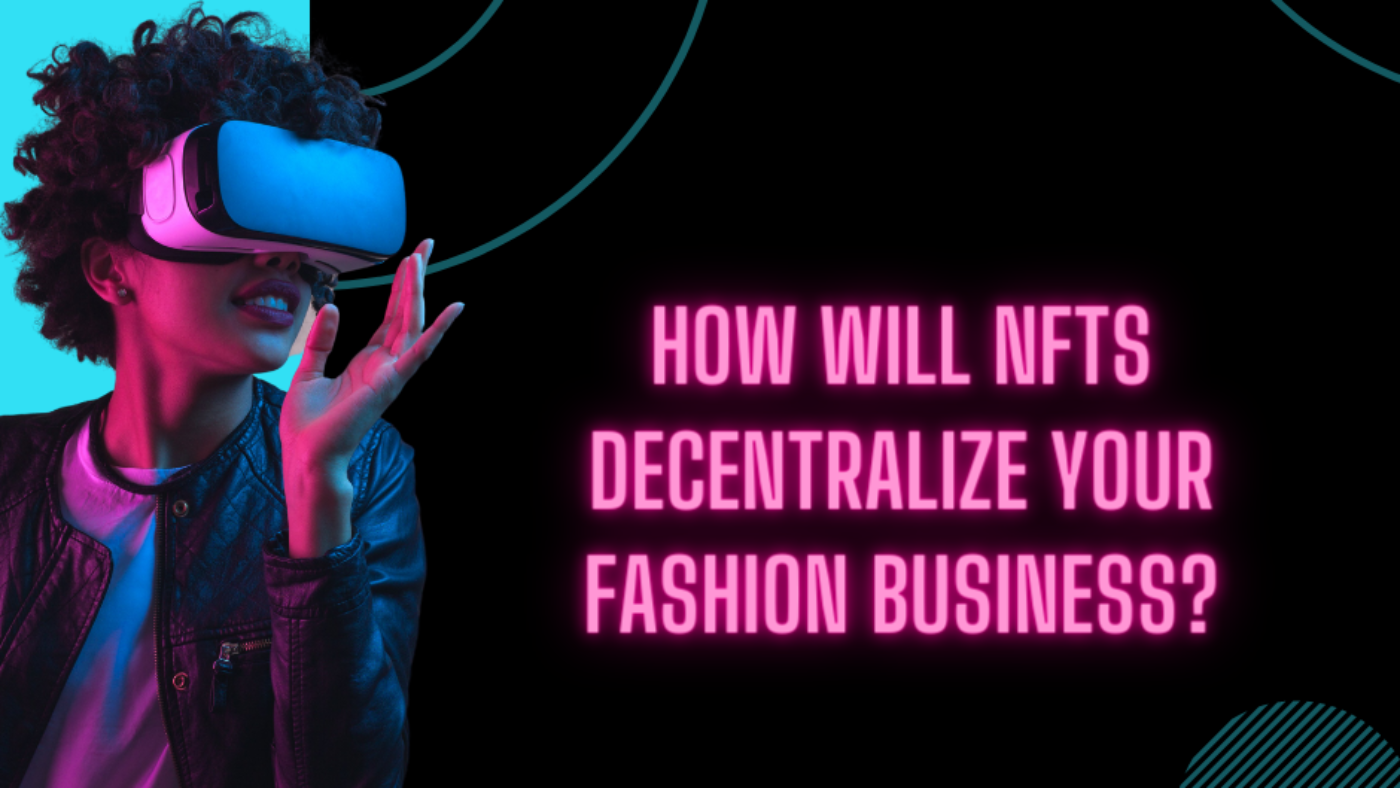In the new digital metaverse, fashion will take on a whole new meaning. With the ability to create and share virtual worlds comes an endless supply of possibilities! Designers can now produce amazing clothes that players wear in any game they choose. Another exciting development worth mentioning is NFTs- non fungible tokens are perfect devices when designing clothing because each one has its own particular features rendering them unique like no others before it existed; this attribute makes fashion world particularly suited towards using these types since every person wants something different for themselves.
New technologies, such as the blockchain, are allowing NFTs to be applied to a wide range of applications. These include blockchain technology and digital signatures that can prove ownership of unique items on the web. But more on this later!
What does metaverse mean to business stakeholders?
Business use cases of Metaverse
Metaverse is a perfect platform for businesses that want to create virtual worlds, or “metaverses” as they call them. These immersive environments can be used by companies and brands alike in order promote products while educating consumers on new trends within the industry with interactive training modes.
Business stakeholders can benefit greatly from the world of fashion in metaverse because it offers better means for revenue generation. One business use case might be using blockchain distribution for guaranteeing that goods are authentic and not fakes. Brands could implement a reward system where they reward people who report counterfeit goods, which would discourage people from buying them in the first place.

Metaverse and Digital Immersive environment
A digital immersive environment (DIE) is a simulated world that can be used for training, education, or entertainment. It is an artificial world that is created with software and displayed on a computer or other electronic device.
Entertainment
A digital immersive environment can be used to create an engaging gaming experience for players. One example is the open-world sandbox game Minecraft, which lets players build their own worlds using a variety of blocks or materials. Players interact with these worlds using virtual hands and other body movements while they explore the vast terrain.
Education and training
Digital immersive environments can be used for education purposes. One example is the virtual world Second Life, which was developed in 2003 by Linden Lab to allow users to create avatars that could interact with each other.
Training and simulation
DIEs are used for training purposes in various fields, including medicine. Virtual Reality has already been used by doctors to perform surgery remotely on patients located thousands of miles away using robotic arms. DIEs can also be used for battle simulations, where participants can get familiar with the environment and equipment before actually going into a real battle.
Marketing
DIEs can be used for marketing purposes because they allow brands to create immersive experiences that customers will remember long after leaving the virtual world. DIE’s also provide an opportunity for businesses to develop interactive marketing campaigns where interactions with the product are done in an easy and engaging way.
Evolution of Web
The internet is a powerful tool that has had so much impact on our lives, yet it was not always this way. The web’s evolution can be split into three eras: Web 1.0 (or Classic), 2.0 and 3-something as of late! It used to just be about static pages with text blocks for content but now we’re getting more interactive.
Web 1.0 & 2.0
Web platforms have evolved greatly over the past two decades in terms of what they can do for users. In the 90s it was just about publishing text-based content, but more recently we’ve seen the rise of Web apps that allow for user interaction.
Web 2.0 employ a much more user-centric or participatory design philosophy. Web 2.0 was the era of writing. Now, users can express their opinion, instead of being just passive readers. This paved way to the era of influencers.
Social media influencers, Instagrammers and Yelp reviewers can have a huge impact on the success or failure of your brand. A single post from an influential youtuber like PewDiePie may be all it takes for you to sell out at Target! As many people know: 90% of customers read online reviews before deciding what products/services they want; 88 percent trust them as much as personal recommendations from friends so when we speak about audience-driven marketing – this is where YOU come into play . These are YOUR potential customers who will make purchases based off honest feedback given by others rather than paid advertisement.
With Web 2.0, the internet became more democratic and created platforms conducive for interaction.
Sign up for more such exciting blog posts!
Web 3.0
The next generation of the internet, known as Web 3.0, will be based on two cornerstones: Semantic Web and Artificial Intelligence. These will aid in the teaching of computers how to interpret data, using machine learning and natural language processing, among other things like blockchain technology.
When you hear the word “web3,” it’s likely that cryptocurrency will come up. Cryptocurrency is all the rage these days, and it’s not hard to see why.
Cryptocurrency is the next generation of currency. Cryptocurrencies are digital assets that can be used as a medium of exchange or for other purposes. The use of cryptocurrency in trade, business and commerce has increased drastically over the past few years due to its decentralized nature and independence from any central bank.
NFTs (non-fungible tokens) are unique digital assets which cannot be duplicated, cloned or counterfeited because each token contains its own cryptographic identity – this means they’re completely original! They act like stocks in that you can purchase them on an open market but their value will fluctuate based on how much people want them at any given time. NFTs also provide ownership rights because it’s possible to transfer these
For more stats on NFTs look up here
NFTs as decentralized assets
NFTs can be anything from a virtual land or physical assets that exist in digital form, to unique collectibles and even tokens with governance rights—and they’re being bought and sold by investors around the world. NFT trading is also growing rapidly as more users buy NFTs to use for games, trade NFTs with other users or simply collect them.
Why are people investing in virtual goods and assets?
NFTs are a really cool way to own something. Having an NFT is like having a limited edition painting in your house… except you can actually trade it with others and use it in games!
The purpose of non-fungible tokens is to make it easy for people to transfer ownership and use the blockchain in a secure way without any centralized servers.
Non-fungible tokens are essentially digital assets.
NFTs are a perfect way to create digital fashion items that can be traded and used in games.

Importance of royalties in digital fashion value chain
The greatest challenge for a creator is to get paid their due royalties for their creation.
It might seem simple enough to get the royalties but with the advent of omnipresent internet, ie web2.0, tracking the usage of an art in digital world just got 100x harder.
This is exactly what Web3.0 would solve.
Royalties will always exist, even if blockchain technology is integrated into the music industry as it exists today. It’s hard to imagine a world where artists don’t receive their fair share of royalties for good work put out by them – but with the help of NFTs, this may be possible.
Digital fashion value chain is well documented. The digital fashion industry is currently worth up to $4 billion. It has also been predicted that it will be worth as much as $40 billion by 2025. The royalty system within the apparel industry has changed over the years, with change taking place in one of two ways.
Either there is a collective agreement to carve up the pie or there are negotiated royalty agreements. When it comes to peer-to-peer economies where there is no money or currency exchanged, it can be hard to find an appropriate way of dividing the pie. There are plenty of different decentralized apps and protocols – such as Bitcoin – that have been designed for this purpose, but they aren’t realistic in all contexts.
NFTs can help define how a collectable is distributed and offer a solution to scarcity by ensuring that those who want these digital records now can get them now.
NFTs in Digital Apparel Ecosystem
The digital apparel ecosystem is a term used to describe the collection of digital technologies and platforms that are used to create, design, produce, sell and distribute clothing.
The digital apparel ecosystem consists of a number of key players, including fashion designers, manufacturers, models, photographers, retailers and consumers.
Here’s where the true democratizing power of NFTs is unraveled – Intellectual Property (IP) protection.
IP protection is a very important issue for shared economy. When we’re talking about shared economy, we’re talking about a shared use of shared property – and that usually means shared intellectual property too.
It’s definitely important for companies to figure out how they can protect their shared objects from identity theft or copyright infringement. Blockchain technology could help with this – not only because it has a decentralized infrastructure which makes privacy safer than ever, but also because it can help companies retain their shared objects’ identities.
How can blockchain technology help me do that?
As shared economy becomes more popular, the services being shared are constantly evolving. What started with carsharing has now expanded to renting just about anything. This is the perfect time for blockchain to help.
The shared economy is constantly evolving and it’s important for businesses involved to be able to adapt along the way. Blockchain provides transparency and security which are most important when dealing with money transfers that often occur between parties who don’t know each other well. You can also use blockchain alongside shared economies systems or replace them entirely without interrupting their service if needed. Using shared economies like on blockchain allows businesses not to worry about security or trustworthiness of its transactions because it all relies on cryptography.
Conclusion
The digital metaverse offers a whole new world for fashion. From the virtual catwalks to the digital store front, this is an exciting time in retail where anything can happen and you’re only limited by your imagination. Business stakeholders who want to tap into this trend have more opportunities than ever before because of decentralized assets like NFTs that are not reliant on centralized institutions or middlemen networks.
As shared economy becomes increasingly popular, it’s important for blockchain technology to offer better means for revenue generation as well as intellectual property protection so companies can thrive without being held back by unfair practices from other actors in the industry.
What do you think? Do you feel that blockchain will be here to stay in fashion?


Leave A Comment